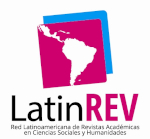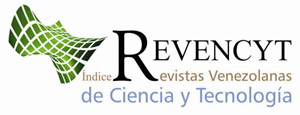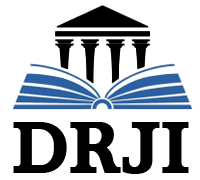Impact of the digital divide on sustainable development and competitiveness
An approach based on advanced machine learning techniques
Keywords:
digital divide, sustainable development, competitiveness, machine learningAbstract
The development of the contemporary economy and society largely depends on fundamental elements such as digital skills among citizens and the adoption of digital technologies among companies. In this sense, this article reviews the details of a study whose main objectives were: to know the key socioeconomic factors of the digital divide among Spanish citizens; identify the aspects of the digital economy and society most associated with the sustainable development of the countries of the European Union; evaluate the relationship between digitization and their average productivity; as well as studying the relationship between patents in digital technologies and R&D, and economic development and productivity; analyze to what extent digital transformation favors the achievement of Sustainable Development Objectives related to per capita income, equality and competitiveness. To achieve these objectives, the data analysis methodology was used based on the application of an artificial intelligence technique based on machine learning, as well as classification and regression trees. In general, the most important results show that the most relevant socioeconomic factors linked to the social digital divide are the person's age, educational level and occupation; Likewise, it was shown that the level of digital skills of the population of European countries is a variable closely associated with their level of per capita income, equality and productivity.
Downloads
References
Amiri, S. y Reif, B. (2013). Internet Penetration and its Correlation to Gross Domestic Product: An Analysis of the Nordic Countries. International Journal of Business, Humanities and Technology, 3(2).
Blank, G. & Groselj, D. (2014). Dimensions of internet use: amount, variety, and types. Inform. Commun. Soc., 17(4). pp. 417–435.
Bilozubenko, V.; Yatchuk, O.; Wolanin, E.; Serediuk, T. & Korneyev, M. (2020). Comparison of the digital economy development parameters in the EU countries in the context of bridging the digital divide. Problems and Perspectives in Management, 18(2). pp. 206–218. https://doi.org/10.21511/ppm.18(2).2020.18
Centro de Noticias ONU (2024). ONU llama a superar brechas en el uso de las TIC. https://www.un.org/es/desa/wsis10
Cioacă, S.; Cristache, S.; Vuţă, M.; Marin, E. & Vuţă, M. (2020). Assessing the impact of ICT sector on sustainable development in the European Union: An empirical analysis using panel data. Sustainability (Switzerland), 12(2). https://doi.org/10.3390/su12020592
Colom, C. (2020). Las brechas digitales que deben preocuparnos y ocuparnos. Ekonomiaz: Revista vasca de economía, 98. pp. 350-353. https://dialnet.unirioja.es/descarga/articulo/7694323.pdf
Coria, S.; Mondragón-Becerra, R.: Pérez-Mesa, M.; Ramírez-Vásquez, S.; Martínez-Peláez, R.; Barragán-López, D.; Ávila-Barrón, O. (2013). CT4RDD: classification trees for research on digital divide. Expert System. Appl., 40(14). pp. 5779-5786.
European Commission (2019). Reflection paper: Towards a Sustainable Europe by 2030. Journal of Chemical Information and Modeling, 53(9). pp. 1689–1699.
Evangelista, R.; Guerrieri, P. & Meliciani, V. (2014). The economic impact of digital technologies in Europe. Economics of Innovation and New Technology.
Gesto Rodríguez, J. (2022a). Utilidad de las TIC en la educación superior: apreciación estudiantil. REFCalE: Revista Electrónica Formación y Calidad Educativa. ISSN 1390-9010, 10(1). 17–36. https://refcale.uleam.edu.ec/index.php/refcale/article/view/3543
Gesto Rodríguez, J. (2022b). El proceso comunicacional entre directivos y docentes en educación primaria: una valoración dialéctica. Revista Gestión y Desarrollo Libre, 7(14). https://doi.org/10.18041/2539-3669/gestionlibre.14.2022.9377
Hansen, S. (2018). Machine learning for economics and policy. Economic analysis of the digital revolution. FUNCAS Social and Economic Studies, 5.
Hargittai, E. (2010). Digital na(t)ives? Variation in internet skills and uses among members of the “net generation”. Sociol. Inq., 80(1). pp. 92–113.
Hartford, J.; Lewis, G.; Leyton-Brown, K. & Taddy, M. (2017). Deep IV: A Flexible Approach for Counterfactual Prediction. Proceedings of the 34th International Conference on Machine Learning.
Hatlevik, O.; Guðmundsdóttir, G. & Loi, M. (2015). Examining factors predicting students’ digital competence. J. Inf. Technol. Educ. Res, 14. pp. 123–137.
Hidalgo, A. y Gabaly, S. (2013). Optimization of prediction methods for patents and trademarks in Spain through the use of exogenous variables. World Patent Information, 35(2), pp. 130-140.
Iberdrola (2024). La brecha digital en el mundo y por qué provoca desigualdad. https://www.iberdrola.com/compromiso-social/que-es-brecha-digital
International Telecommunication Union [ITU] (2020). “Measuring digital development. Facts and figures 2020”. Development Sector, ITU Publications. https://www.itu.int/en/ITU-D/Statistics/Documents/facts/FactsFigures2020.pdf
ITU-D (2020). ITU ICT-Eye. https://www.itu.int/en/ITUD/Statistics/Pages/stat/default.aspx Johnson, J. (2021). How many people use the internet? Worldwide digital population as of January 2021. Statista. https://www.statista.com/statistics/617136/digital-population-worldwide/
Karahan, Ö. (2016). The Impact of ICT-Producing and ICT-Using Industries on Economic Growth in OECD Countries. 5th International Conference on Trade, Business, Economics and Law. ICTBEL 2016 (Oxford) Conference Proceedings, pp. 14-23
Kerras, H.; Sánchez-Navarro, J.; López-Becerra, E. & de-Miguel Gómez, M. (2020). The impact of the gender digital divide on sustainable development: Comparative analysis between the european union and the maghreb. Sustainability (Switzerland), 12(8). https://doi.org/10.3390/SU12083347 Kovačić, Z. & Vukmirović, D. (2008). ICT adoption and the digital divide in Serbia: factors and policy implications. In Proceedings of the informing science & it education conference (Insite).
Hoyos, J. y Cardona, D. (2021). Caracterización de la brecha digital en comunidades rurales en el marco de los ODS. 25° Congreso Internacional de Ciencias Administrativas, Área de investigación: Sustentabilidad y ciencias administrativas. https://investigacion.fca.unam.mx/docs/memorias/2021/17.01.pdf
Morandini, M.; Thum-Thysen, A. & Vandeplas, A. (2020). Facing the Digital Transformation: are Digital Skills Enough? Comisión Europea, Directorado General de Asuntos Económicos y Financieros. Economic Brief 054.
Naciones Unidas. (2015). Objetivos y metas de desarrollo sostenible – Desarrollo Sostenible. Agenda 2030. https://www.un.org/sustainabledevelopment/es/objetivos-dedesarrollo-sostenible/ OPP, R. (2024). La evolución de la brecha digital. Programa de las Naciones Unidas para el Desarrollo [PNUD]. https://www.undp.org/es/blog/la-evolucion-de-la-brecha-digital
Rodicio-García, M.; Ríos-De-Deus, M.; Mosquera-González, M. & Abilleira, M. (2020). The digital divide in Spanish students in the face of the COVID-19 crisis. Revista Internacional de Educación Para La Justicia Social, 9(3). pp. 103–125. https://doi.org/10.15366/RIEJS2020.9.3.006
Sinha, D. (2008). Patents, Innovations And Economic Growth In Japan And South Korea: Evidence From Individual Country And Panel Data. Applied Econometrics and International Development, Euro-American Association of Economic Development, 8(1). pp. 181-188.
Spiezia, V. (2012). ICT investments and productivity: Measuring the contribution of ICTS to growth. OECD Journal: Economic Studies, 2012/1.
van Deursen. A. & Helsper, E. (2015). The Third-Level Digital Divide: Who Benefits Most from Being Online? Communication and Information Technologies Annual: Digital Distinctions and Inequalities. Studies in Media and Communications, 10. pp. 29-53.
van Deursen, A. & van Dijk, J. (2010). “Measuring internet skills”. Int. J. Hum.-Comput. Interact., 26(10), pp. 891–916.
van Deursen, A. & van Dijk, J. (2014). The digital divide shifts to differences in usage. N. Media Soc., 16(3), pp. 507–526.
van Deursen, A.; van Dijk, J.; Peters, O. (2015). Increasing inequalities in what we do online: a longitudinal cross-sectional analysis of internet activities among the Dutch population (2010 to 2013) over gender, age, education, and income. Telemat. Inform 32(2). pp. 259–272.
Vasilescu, M.; Serban, A.; Dimian, G.; Aceleanu, M. & Picatoste, X. (2020). Digital divide, skills and perceptions on digitalisation in the European Union - Towards a smart labour market. PLoS ONE, 15(4): e0232032. https://doi.org/10.1371/journal.pone.0232032
Vega, O. y Rodríguez, L. (2008). La inclusión digital como motor de desarrollo: una opción para la Colombia rural. Dialnet. Sociedad y Utopía, pp. 75–95. https://dialnet.unirioja.es/servlet/articulo?codigo=2770050 Zhang W.; Zhao S.; Wan X. & Yao Y. (2021). Study on the effect of digital economy on high-quality economic development in China. PLoS ONE, 16(9): e0257365. https://doi.org/10.1371/journal.pone.0257365
Published
How to Cite
Issue
Section
License
Copyright (c) 2024 José Gesto Rodríguez

This work is licensed under a Creative Commons Attribution-NonCommercial-ShareAlike 4.0 International License.





















